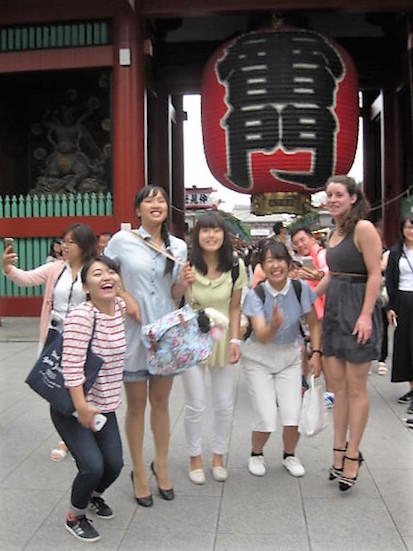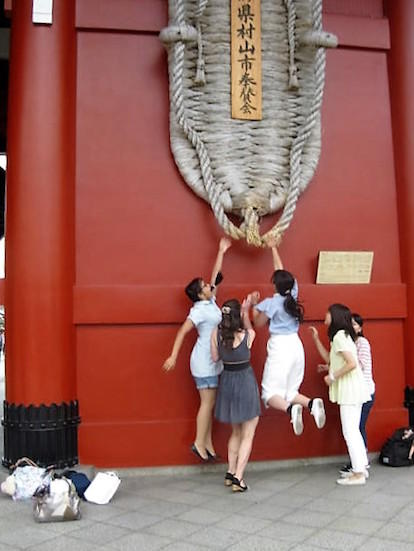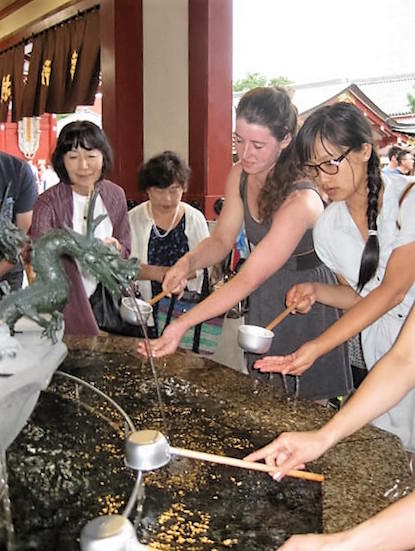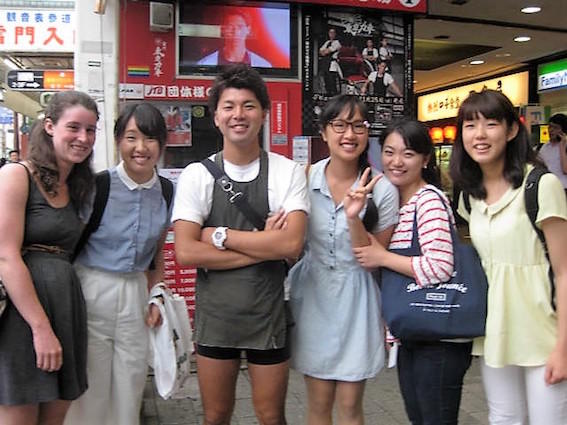2016 Bunkyo/Cabrillo ECE Internship Program
2016 Bunkyo / Cabrillo ECE Internship Program Website #12

2016/07/05
The students always want to jump in front of the Kaminarimon (thunder gate), the outer gate of Senso-ji temple and the symbol of Asakusa. This is Not a Japanese tradition, but they just feel like it?
雷門の前ではどうしてもジャンプしたくなるようです。これが日本の伝統だと思われると困りますが...

2016/07/05
This pair of huge traditional straw sandals called “O-Waraji” had been made by 800 citizens of Murayama City in a month and devoted to Senso-ji. They are the charm against evils because they are symbolic of the power of “Ni-Ou” (Deva Kings). Wishing for being good walkers, many people will touch this “O-waraji”. So did they!
この大わらじは、山形県村山市の800人の人が、一ヶ月をかけて制作したものだそうです。わらじは仁王さまのお力を表し、「この様な大きなわらじを履くものがこの寺を守っているのか」と驚いて、魔が去っていくといわれています。また、健脚を祈って、このわらじに触れていく人も多いようです。そこで、学生たちもこのように触ろうとしています!


2016/07/05
Who is this guy in the middle? He is the puller called Shafu of Jinrikisha. Jinrikisha is a small, two-wheeled, cart-like passenger vehicle, pulled by one or more person. Nowadays, “Jinrikisha” is no longer used as pure means of transportation, but instead, utilized at prime sightseeing spots for excursion tours. When visiting historical cities such as Kamakura or Kyoto, or older towns like Asakusa in Tokyo, you could very easily encounter “Jinrikisha”. Nancy and Candice didn’t get on the jinrikisha but they asked this puller to take a picture of him together.
この真ん中のお兄さんは誰でしょうか。彼は人力車の車夫だったようです。人力車に乗ったわけではありませんが、みんなで一緒に写真に入ってくれるように頼んだようです。フレンドリーなお兄さんでよかったですね。
